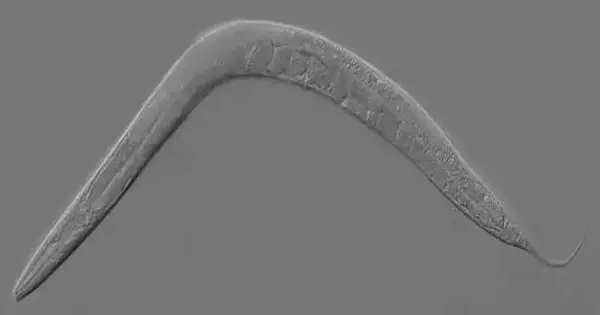In nature, smaller animals frequently “hitch a ride” with larger ones to save energy when migrating long distances. Researchers demonstrate how tiny Caenorhabditis elegans worms can use electric fields to “jump” across Petri plates or onto insects in a paper that was published on June 21 in the journal Current Biology. This enables the worms to glide through the air and attach themselves, for example, to naturally charged bumblebee chauffeurs.
According to Takuma Sugi, a biophysics professor at Hiroshima University and co-senior author of the study, “Pollinators, such as hummingbirds, are known to be electrically charged, and it is believed that pollen is attracted by the electric field formed by the pollinator and the plant.” However, it was not entirely clear whether interactions between various terrestrial animals made use of electric fields.
When the researchers discovered that the worms they were cultivating frequently landed on the lids of Petri dishes, in opposition to the agar they were placed on, they began investigating this project. When the team used a camera to observe this behavior, they discovered that the worms weren’t just climbing up the dish’s walls. They were instead leaping from the plate’s floor to the ceiling.
“Pollen is thought to be drawn to the electric field created by the pollinator and the plant. Pollinators, like insects and hummingbirds, are known to be electrically charged.”
Takuma Sugi, a biophysics professor at Hiroshima University.
The researchers placed worms on a glass electrode in the hopes that they could travel by way of an electric field. When a charge was applied, the worms only leapt to another electrode. The intensity of the electric field caused the worms to leap at a rate of 0.86 meters per second, which is comparable to the speed at which a human walks.
The next step was to give a bumblebee a natural electric charge by applying flower pollen to it. Worms climbed aboard these bees after standing on their tails when they got close. Some worms even piled on top of one another and jumped in a single column, moving 80 worms across the gap at once.
According to Sugi, “Worms stand on their tails to reduce the surface energy between their bodies and the substrate, making it easier for them to attach to other passing objects.” One worm lifts multiple worms in a column, and this worm takes off to move across the electric field while carrying all of the worms in the column.”
C. elegans is known to ride along with bugs and snails, but because these animals don’t carry electric fields well, they have to touch them directly. Although it was unclear how the worms could travel such a significant distance given their microscopic size, C. elegans is also known to jump on winged insects. C. elegans can travel in an electric field created by winged insects as they naturally accumulate charge while flying, according to this study.
This behavior in C. elegans is not completely understood. The genetics of the worms might be a factor. Other worm species that are closely related to C. elegans were also seen jumping, and mutants that are unable to sense electric fields were found to jump less than their normal counterparts. However, additional research is required to ascertain the specific genes involved in these jumps and whether other microorganisms can also jump using electricity.
More information: Takuma Sugi, Caenorhabditis elegans transfers across a gap under an electric field as dispersal behavior, Current Biology (2023). DOI: 10.1016/j.cub.2023.05.042. www.cell.com/current-biology/f … 0960-9822(23)00674-7





